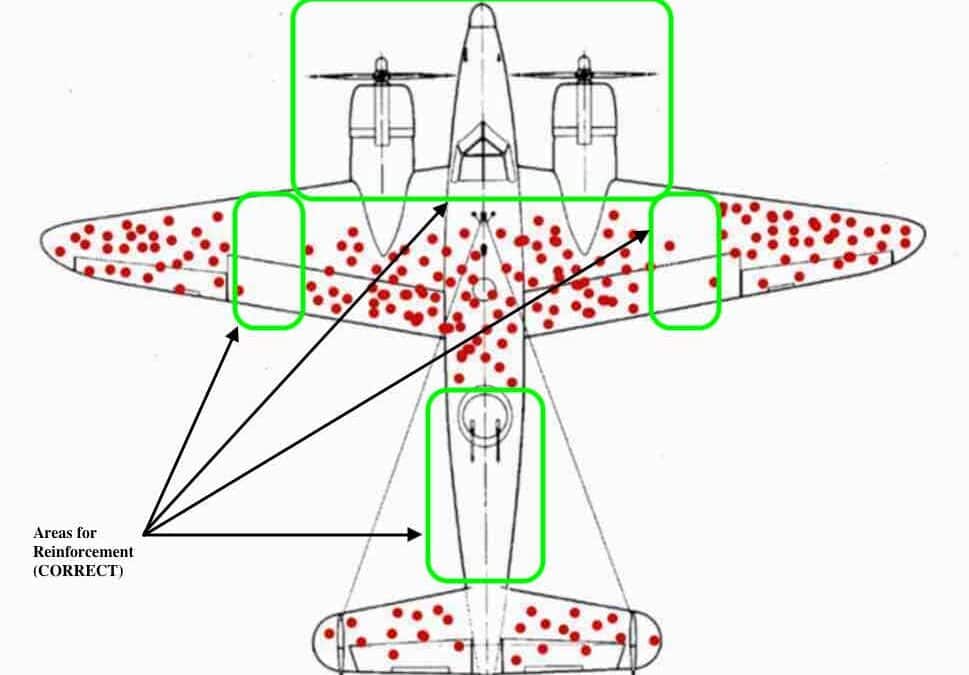Reading Time: 6 minutes
Key Points
- Abraham Wald, a young statistician, made a profound observation during World War II that saved countless lives.
- The concept he illuminated was the “Survivorship Bias,” a cognitive error where we focus solely on the survivors and overlook the ones who didn’t make it.
- This bias is prevalent in various aspects of our lives, influencing our perception of success, strategies, and decision-making processes.
The Story Behind Survivorship Bias
World War II was a time of innovation, strategy, and problem-solving. But one story, not commonly known, is how a young statistician named Abraham Wald challenged the status quo and, in the process, saved countless lives.
His insight into what is now known as “Survivorship Bias” remains relevant today, guiding us in various areas of life.
The Dilemma of Bullet Holes
During the war, there was a pressing need to reinforce U.S. planes.
Analysts studied the bombers that returned from missions, marking the bullet holes and damages. The immediate conclusion was to reinforce the tail, body, and wings – the areas with the most apparent damage.
But Wald noticed a flaw in this line of thinking.
Abraham Wald’s Game-Changing Insight:
Wald pointed out that the areas without bullet holes on the returning planes were where the aircraft was most vulnerable.
His logic? The planes being analyzed had survived their damages, but those that hadn’t returned were the ones hit in the areas devoid of bullet holes on the returning planes.
By recognizing this survivorship bias, Wald suggested reinforcing the engines and other undamaged parts, leading to a significant increase in the safety of plane crews.
Understanding Survivorship Bias:
This cognitive bias means we often focus on the survivors or successes while neglecting the failures or casualties. This skewed perception can lead to flawed conclusions. Real-world examples include:
- Believing in the traits of successful individuals while overlooking unsuccessful ones with the same traits.
- Celebrating entrepreneurs who risk everything and succeed, yet ignoring countless others who took similar risks and failed.
- Adopting strategies of successful companies without considering those that failed using the same strategies.
The Hidden Value of the Unseen:
Survivorship Bias can’t always be avoided, as many stories and histories are written by the victors. However, it’s crucial to recognize and account for this bias. What remains unseen often holds as much, if not more, value and insight than what is visible.
Practical Exercise
To avoid the trap of Survivorship Bias, consider four quadrants of a simple 2×2 grid:
- Did Xand won
- Did X and lost
- Didn’t do X and won
- Didn’t do X and lost
Consider the presence of examples in all four quadrants and you have a real grounding in the true base rates.

